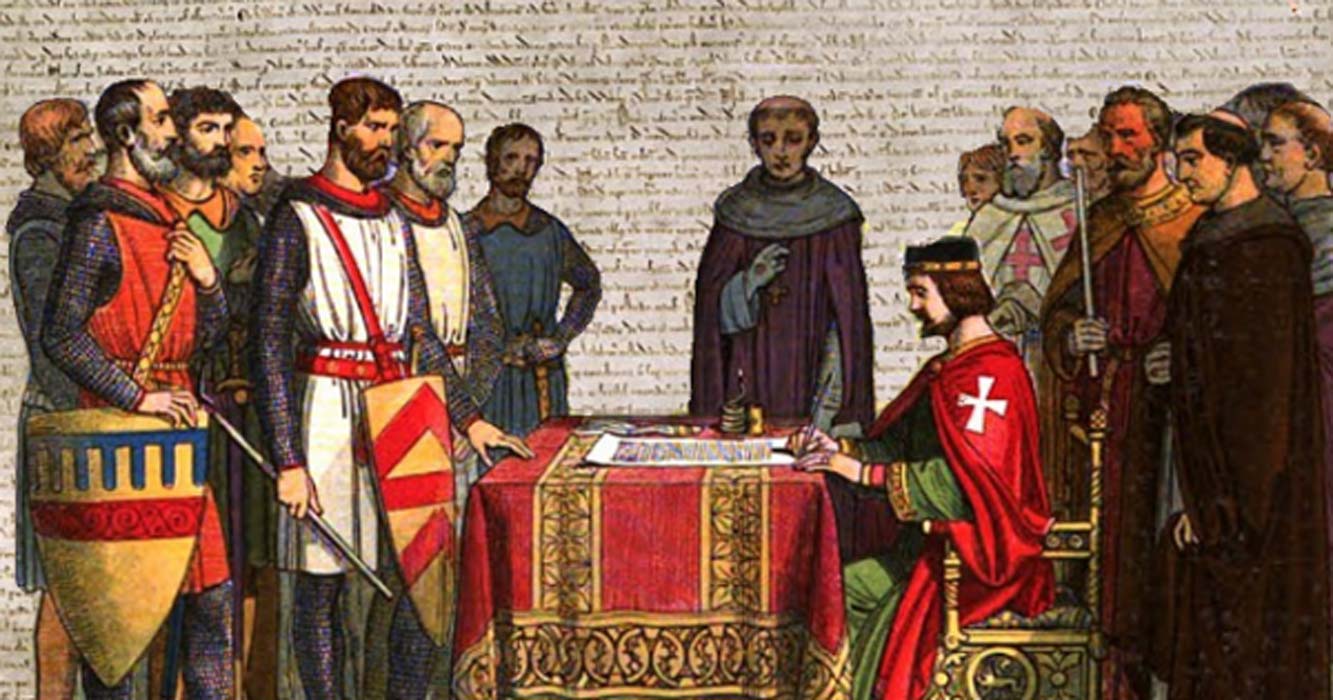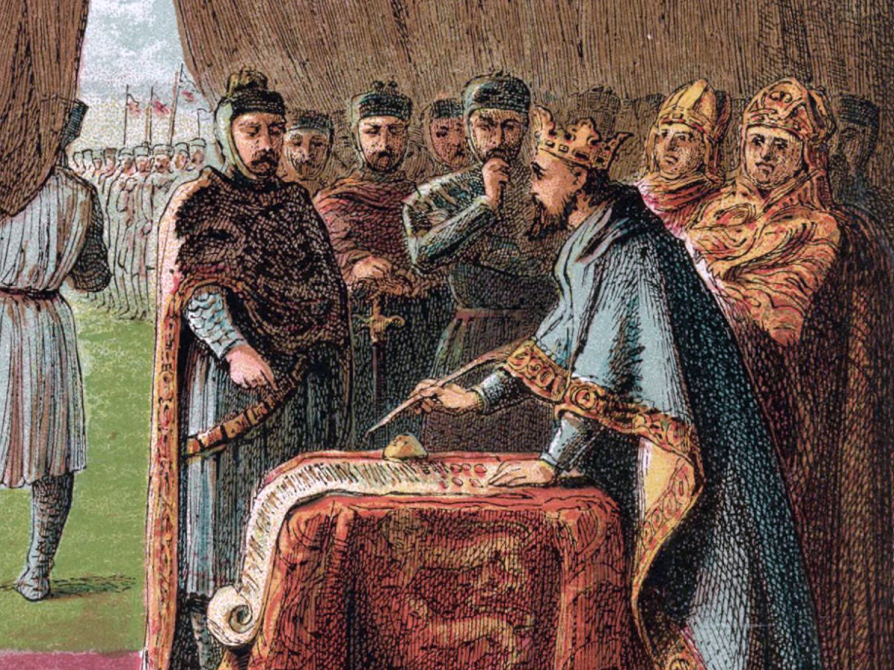Magna Carta

Before there was a Declaration of Independence or a Constitution, there was Magna Carta — a desperate power play between a failing monarch and his fed-up barons.
The Dive
In the early 1200s, King John of England was having a bad reign. He'd lost Normandy, emptied the treasury, raised taxes, fought with the Pope, and enraged the barons who helped him rule. After a humiliating military defeat in France in 1214, the barons decided they'd had enough.
On May 12, 1215, a rebel group presented King John with an ultimatum: honor their rights or prepare for civil war. With his back against the political wall, John agreed to negotiations.
On June 15, 1215, at a meadow called Runnymede, the two sides met—armed and uneasy. The result? Magna Carta. Sixty-three clauses that mostly protected the elite, but hinted at something bigger: no one, not even a king, is above the law.
Clause 39—one of the most quoted in history—promised that 'no freeman shall be seized or imprisoned...except by the lawful judgment of his peers or by the law of the land.' Sound familiar? Trial by jury, habeas corpus, due process? Yeah, it started here.
Almost immediately, the Charter was annulled by Pope Innocent III, triggering civil war. But the idea had been released into the bloodstream of history. Later kings reissued it. Parliament invoked it. American revolutionaries cited it.
Though it began as a narrow defense of baronial privilege, Magna Carta evolved into a symbol of liberty. By the 17th century, jurists like Sir Edward Coke used it to challenge the divine right of kings. In the 18th, its echoes shaped the U.S. Constitution.
Only four original copies of the 1215 Magna Carta survive. But its real legacy isn’t parchment—it’s principle. That even power must kneel before law. That freedom, once demanded, is hard to silence.
Why It Matters
Magna Carta was never meant to empower the people—it was a deal between powerful men. But its survival, reissue, and reinterpretation gave future generations a powerful precedent: rulers can be held accountable. From England to America and beyond, its ghost still stands watch over every demand for justice.
?
How did the Magna Carta influence the development of the U.S. Constitution and Bill of Rights?
Why did King John agree to sign the Magna Carta if he didn’t intend to follow it?
What does Clause 39 tell us about medieval ideas of justice—and how did those evolve?
Why is Magna Carta often seen as a symbol of liberty even though it mostly protected nobles?
What parallels can you draw between the Magna Carta and modern-day struggles over government power?
Dig Deeper
Why is this old piece of parchment considered to be such a powerful symbol of our rights and freedoms? Narrated by Monty Python’s Terry Jones, this animation takes you back to medieval times, when England under the reign of Bad King John. It asks why Magna Carta was originally created and what it meant to those living in the 13th century.
Related

Democracy: Government by the People
Democracy is more than voting every few years. It is a way of sharing power, protecting rights, and making sure ordinary people have a real voice in how they are governed.

The Bill of Rights: What Is It—and What Does It Actually Do?
The Bill of Rights wasn’t added to the Constitution because everything was going great, it was added because the people didn’t trust the government. And they had every reason not to.

Fascism: Power, Propaganda, and the Fall of Democracy
Fascism emerged from the ruins of World War I and found its foothold in fear, nationalism, and economic despair. It promised unity, but delivered control, conformity, and catastrophe.
Further Reading
Stay curious!
